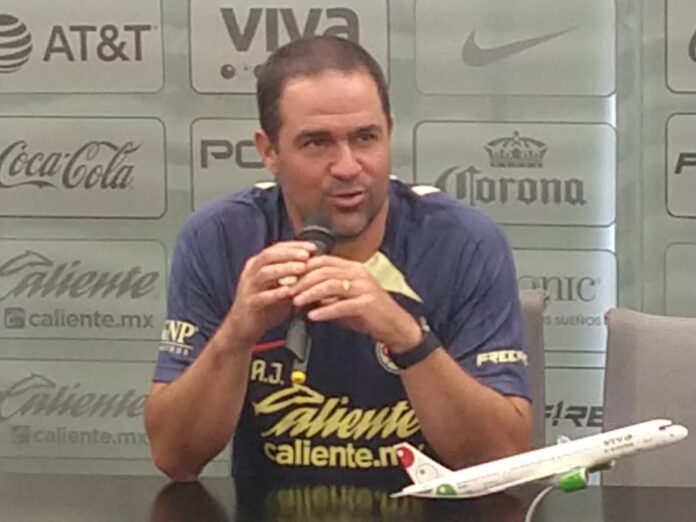Tactical Battle Royale: Jardine vs. Demichelis in the Liga MX Finale
Okay, soccer fans, let’s dive into what was arguably the most captivating tactical duel of the Liga MX season: the final between Atlético San Luis, helmed by the brilliant André Jardine, and River Plate, masterminded by the equally impressive Martín Demichelis. Forget fireworks; this was a chess match played at breakneck speed on a football pitch, a battle of wits that kept us all on the edge of our seats. This wasn’t just about goals; it was about strategy, adaptation, and the sheer brilliance of two managers at the top of their game.

Introduction: A Clash of Styles
Before we dissect the tactical nuances, let’s set the stage. We had two vastly different approaches colliding. Jardine, known for his pragmatic and adaptable style, often employs a flexible 4-3-3 or a 4-2-3-1, prioritizing a solid defensive foundation and quick transitions. Think counter-attacks, clever pressing, and a focus on exploiting space. On the other side, Demichelis, inheriting the River Plate legacy, favored a more possession-based, attacking style, often deploying a 4-3-3 or a 4-4-2, aiming to dominate the midfield and create chances through intricate passing and movement. This wasn’t just a final; it was a philosophical clash.
Jardine’s Masterclass: Defensive Solidity and Counter-Punching Power
Jardine’s game plan was crystal clear: frustrate River Plate’s possession game and hit them on the break. He knew River’s strength lay in their midfield control and creative attacking players. To combat this, he employed a high press in the midfield, forcing turnovers in dangerous areas. This wasn’t a reckless, all-out press; it was intelligent, disciplined pressing, focusing on cutting off passing lanes to key players like Enzo Pérez and Nicolás De la Cruz.

- The Importance of Compactness: Atlético San Luis’s defensive shape was impeccable. They maintained a compact block, making it incredibly difficult for River Plate to penetrate. Their midfield three worked tirelessly, shielding the defense and winning back possession quickly.
- Exploiting Transition Moments: Whenever they won the ball, Atlético San Luis transitioned with lightning speed. Their wingers, often tasked with tracking back diligently, became lethal weapons on the counter, using their pace to stretch the River Plate defense.
- Set-Piece Prowess: Let’s not forget the importance of set pieces. Jardine’s meticulous preparation paid off, with Atlético San Luis creating several dangerous situations from corners and free kicks. This highlighted another aspect of his tactical prowess: attention to detail often overlooked in the excitement of open play.
Demichelis’s Response: Adapting to the Pressure

Demichelis, however, wasn’t caught off guard. He anticipated Jardine’s strategy and made adjustments throughout the game. While River Plate struggled initially to break down Atlético San Luis’s compact defense, Demichelis showed his tactical flexibility.
- Midfield Adjustments: He recognized the effectiveness of Atlético San Luis’s midfield press and responded by instructing his midfielders to drop deeper, creating more passing options and slowing down the tempo. This helped them regain control of possession, albeit at a slower pace than they preferred.
- Wing Play and Overlaps: To bypass the congested midfield, Demichelis encouraged more overlapping runs from his full-backs, utilizing the width of the pitch to stretch Atlético San Luis’s defense. This created space for their wingers to cut inside and attempt shots or deliver crosses.
- Second-Half Shift: In the second half, Demichelis might have introduced a more direct approach, perhaps using long balls to bypass the midfield press and exploit the pace of their forwards. This is a common adjustment when facing a team that excels at stifling possession.
The Key Tactical Battles Within the Match
The game wasn’t just about overall strategy; it was a series of smaller tactical battles fought throughout the 90 minutes. Let’s look at some key examples:
- The Battle for Midfield Supremacy: This was the central contest. Atlético San Luis’s midfield trio fought tooth and nail to disrupt River Plate’s passing rhythm, while River Plate’s midfielders attempted to dictate the tempo and create chances. The ebb and flow of this battle largely dictated the flow of the game.
- The Wing-Back Duel: The full-backs on both sides played crucial roles. Atlético San Luis’s wing-backs were tasked with both attacking and defending, requiring incredible stamina and tactical awareness. River Plate’s full-backs, on the other hand, were crucial in providing width and delivering crosses. The success of each team in this area significantly impacted the outcome.
- Aerial Dominance: Set pieces became a significant factor, highlighting the importance of aerial battles. Both teams had players capable of winning headers, making the battle for aerial dominance another key tactical subplot.

